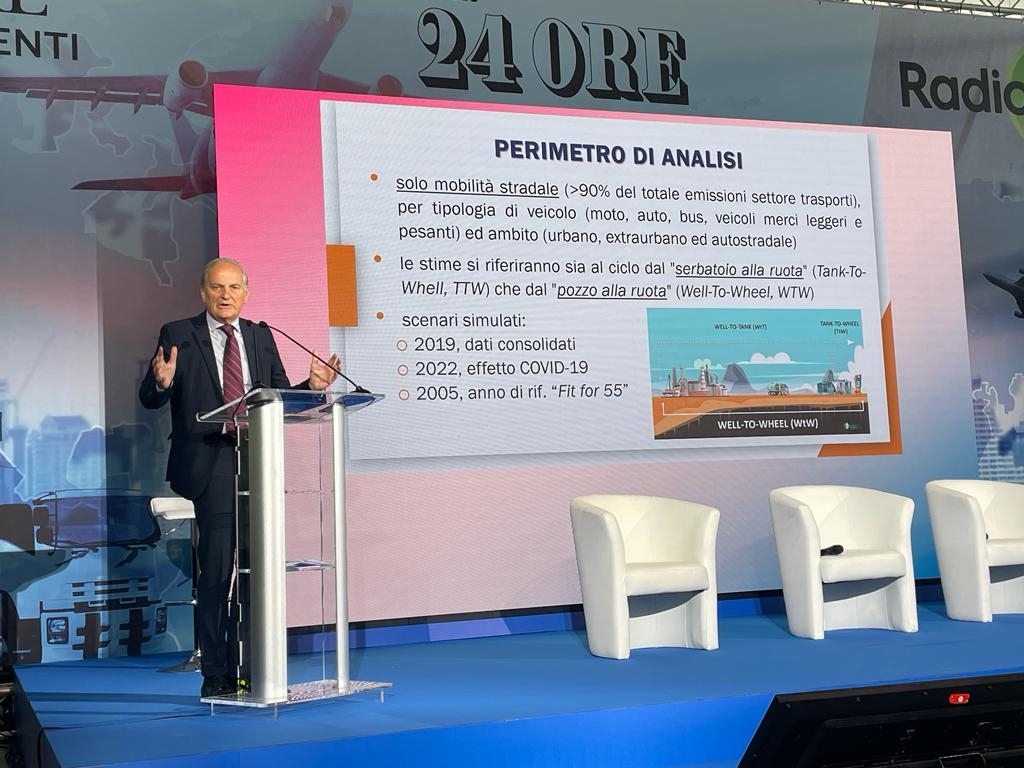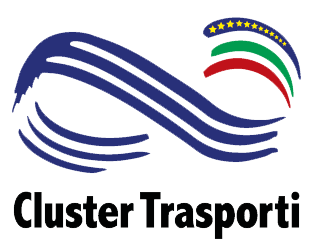EU Fit for 55 climate objectives: the National Transport Technology Cluster introduces the “Paths to 2030” analysis

Published 9 May 2023
Professor Ennio Cascetta, President of the National Transport Technology Cluster, has presented the study “Paths to 2030: Possible trajectories of road transport for the objectives of the EU climate package Fit for 55”, as part of the “Transport in the heart of the 2023 economy” – by Il Sole 24 Ore.
This is the first systematic study on the composition of road transport in Italy in terms of different types of vehicles (cars, motorbikes, buses, light and heavy commercial vehicles), area of use (urban, extra-urban and motorway), fuel supply (petrol, diesel, hybrid thermal-electric and electric) and EURO emission classes.
The study estimates travel distances, CO2 emissions, current energy consumption (2019 and 2022), 2005 (reference year of the European directive) and projects them to 2030 (reference year of the EU “Fit for 55” directive ) under different scenario hypothesis.
The Transport Technology Cluster, an association of research bodies, universities and businesses which brings together over 15 university centres, 8 research organizations and bodies, 13 public-private aggregations (which bring together over 2,000 partners), 6 trade associations and 6 regions – recognized by the Ministry of Scientific Research – deals with research and technological transfer in the road, rail and maritime transport sector.
The numbers emerged from the analysis
Many interesting elements emerged from the study. These elements can help guide the country’s environmental and industrial policies in a sector of enormous social and economic importance such as that of people’s mobility and goods logistics.
Road transport of passengers and goods significantly exceeds “official” estimates and without adequate knowledge of the data it is impossible to plan and monitor the relevant phenomena.
In 2019, passenger vehicles traveled 413 billion kilometers and freight vehicles 90 billion for a total of over 500 billion. Approximately 24% of these journeys take place on municipal roads and between 19% (passengers) and 29% (goods) on motorways which represent only 3% of the extension of the national road network.
Road transport emits around 105 million tons of CO2 every year (over 24% of the total of all national emissions). Emissions become over 130 million tons if we also include those related to the production and distribution of fuels and electricity (Well-To-Wheel).
Freight transport emits 35% of CO2 compared to 18% in terms of kilometers travelled.
To predict the evolution of road traffic and its energy and environmental impacts it is necessary to make various hypothesis on the variables affected by high levels of uncertainty such as GDP, the evolution of the national economy and the decoupling between economic growth and traffic evolution, the effectiveness of the modal rebalancing policies envisaged by the PNRR both in urban and extra-urban areas, the renewal rates of the fleet of passenger and goods vehicles, the percentage of purchase of electric and hybrid vehicles in the renewal, the percentages of electricity production from renewables, the availability of bio-fuels.
2030: “extreme” scenarios and “limit” scenarios
The study hypothesizes two “extreme” scenarios for 2030, i.e. corresponding to the combination of all factors favorable (“MAX decarbonization”) and unfavorable (“MIN decarbonization”) to the achievement of the EU objectives, while maintaining the hypothesis within the policies already started in the sector. Both scenarios are highly unlikely, but provide an estimate of the range of effects that can occur and how different components impact those outcomes.
The values obtained compared to 2005 (reference year of the European directive which sets a reduction target of 43% for road transport) are very scattered. The “MIN decarbonization” scenario reduces CO2 emissions by -10% while the “MAX decarbonization” scenario reaches -30%. This result can only be achieved with consistent market penetration of hybrid and electric vehicles, as well as the introduction of bio-fuels into the network, both in the form of blending and in purity (in particular paraffinic biodiesel from hydrogenation processes -HVO- and bio- compressed methane), to power the non-electrifiable vehicle fleet in the short and medium term. In particular, it emerges that freight transport by heavy vehicles is the most difficult to decarbonize (hard to abate), at least in the time horizon considered.
The study also explores “edge” scenarios to test possible extremes. These include a scenario in which the availability of biofuels is increased and CO2 emissions are considered zero as expected today for synthetic fuels, resulting in CO2 reductions of -29% and -47% in the MIN and MAX scenarios respectively.
Another extreme scenario envisages that all cars purchased between now and 2030 are battery electric, in this case there would be reductions of 44.5% in the MAX scenario, barely reaching the European decarbonization target which, as mentioned, is -43%.
Given the variability of the results and the multiplicity of variables at play, it is absolutely necessary to continuously monitor the trend of the economic, industrial and behavioral phenomena involved in order to adapt policies in an “eco-rational” way, i.e. maximizing the decarbonization effect for each public intervention and taking into account the level of technological maturity of the different solutions.
From this link you can download the slides presented during the event.


